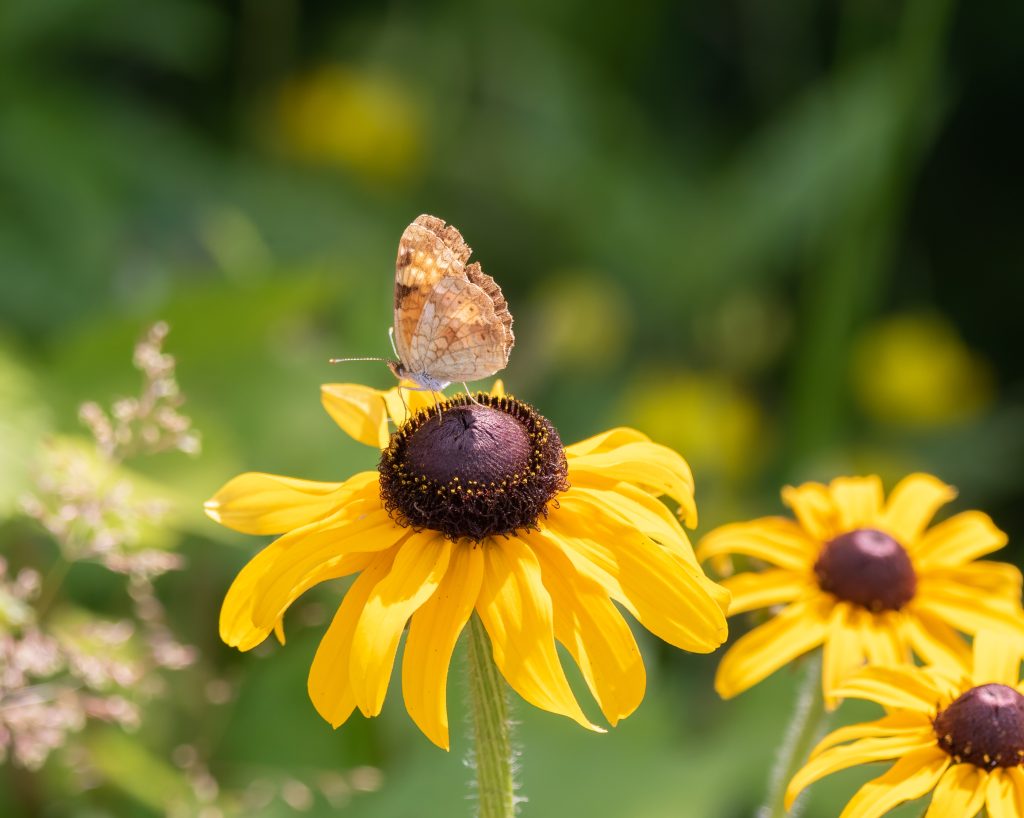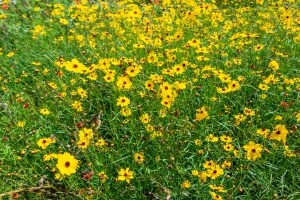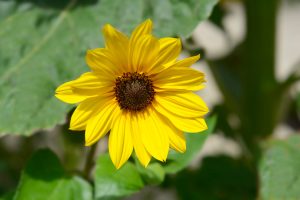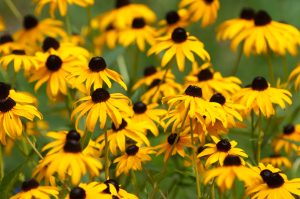
Florida’s diverse ecosystem showcases a remarkable array of native wildflowers that burst into vibrant colors, particularly during the spring season. Cultivating these indigenous blooms not only enhances the beauty of your lawn but also fosters biodiversity. Florida’s spring landscape comes alive with a vibrant tapestry of native wildflowers, each species contributing its unique charm to the natural scenery.
Yellow, a color that beckons pollinators, especially bees and butterflies, is a prevalent hue among these wildflowers. Many have evolved to showcase bright yellow tones, attracting pollinators, and ensuring the vital transfer of pollen for the continued existence of the plant species. In this spotlight, we’ll explore a selection of my favorite yellow-blooming wildflowers: Leavenworth’s tickseed, dune sunflower, and black-eyed Susan.
Leavenworth’s Tickseed

Coreopsis, Florida’s state wildflower, boasts 14 native species flourishing in North Florida. Among these, Leavenworth’s tickseed (Coreopsis leavenworthii), predominantly found in Florida, graces the Panhandle region with its distinctive yellow, daisy-like flowers adorned with dark centers and scalloped yellow ray florets.
Thriving in open areas, flatwoods, and prairies, this annual or short-lived perennial becomes a beacon of color in the spring landscape. Ideal for wildflower gardens, Leavenworth’s tickseed requires adequate space for reseeding, best achieved by planting one to two feet apart in the spring for optimal flowering. The plant quickly establishes itself in moist soils, benefiting from occasional pruning or mowing to encourage a second flush of flowers.
Preferably rooted in sandy, well-drained soil, Leavenworth’s tickseed demands full sun exposure for maximum flower production, with moist soils playing a pivotal role in reseeding and maintaining this distinctive species.
Beach Sunflower

The beach sunflower (Helianthus debilis), also recognized as the dune sunflower, is renowned for its coastal charm and nearly year-round blossoms. Adapting gracefully to both coastal regions and inland landscapes, this sunflower showcases two-inch flowers resembling daisies or sunflowers, boasting yellow petals and brown centers. A captivating trait is its tendency to follow the sun throughout the day.
When cultivating beach sunflowers, it is essential to allocate ample space for their spreading nature. To maximize visual impact, consider planting them in masses, maintaining distances of three to four feet between each plant. As beach sunflowers may become unruly over time, periodic removal of old stems is advisable. Encouraging new plants to sprout from seeds contributes to a healthier growth pattern. Light trims every three months can further enhance the foliage’s vibrancy and overall maintenance. While acting as an annual in freezing temperatures, the beach sunflower generally reseeds itself and displays admirable tolerance to coastal elements, including salt and wind.
For optimal growth conditions, planting in full sun encourages abundant flowering, although the plant can tolerate light shade for part of the day. Preferably, choose well-drained sandy soils, avoiding persistently moist conditions to ensure the overall health and vitality of the beach sunflower.
Black-eyed Susan

Black-eyed Susan (Rudbeckia hirta), a classic native bloom, captivates with its widespread availability and versatile nature as an annual, biennial, or perennial. This resilient plant grows to a height of one to two feet, showcasing rough-textured leaves and deep-yellow aster-like flowers with dark brown disk flowers forming a central dome.
When incorporating black-eyed Susans into your landscape, consider their suitability for mixed wildflower beds, where they effortlessly self-seed in open or lightly mulched areas. Maintaining proper spacing of 14 to 18 inches between plants, vigilant monitoring during extended dry periods, and providing deep watering, when necessary, contribute to the overall health and vitality of these iconic blooms.
Thriving in well-drained soils, black-eyed Susan showcases adaptability to various soil types. Whether exposed to full sun or partial shade, the plant optimizes its blooming potential, enhancing the visual appeal of any landscape.
Encourage Wildflowers in Your Landscape
Selecting native wildflowers adapted to your landscape’s specific soil, light, and drainage conditions is crucial for success. If initial attempts fail, try different species until you find the perfect match, emphasizing the importance of using the right plant in the right place. Thorough watering aids in establishment, but once native wildflowers are established, they generally require minimal irrigation. Avoid overwatering to prevent fungal and rot issues.
Native wildflowers in Florida typically do not need additional fertilization, as it can lead to rapid growth and increased susceptibility to pests and diseases. Embrace the natural resilience of these plants by avoiding unnecessary fertilization. Encourage the persistence of wildflowers by embracing self-seeding, maintaining open, lightly mulched areas for natural germination, and being vigilant when weeding.
Florida’s spring blooming wildflowers, including Leavenworth’s tickseed, beach sunflower, and black-eyed Susan, contribute to the state’s biodiversity. Selecting the right species and providing proper care allows us to cultivate these native blooms and actively participate in conserving Florida’s precious ecosystem.
- The Dirt on Compost: Hot and Worm Composting at Home - October 30, 2025
- Fall Gardening Spotlight: Collard Greens - October 3, 2025
- Dung Beetles of the Florida Panhandle - June 26, 2025
